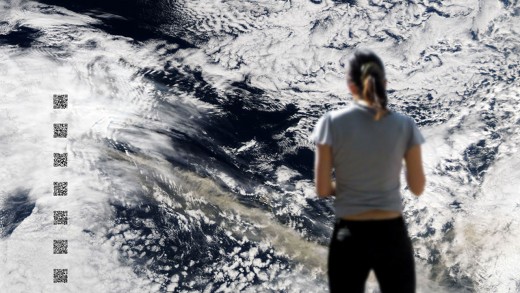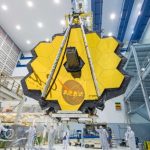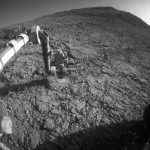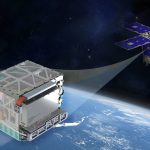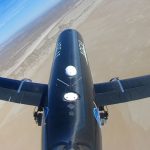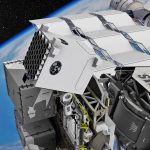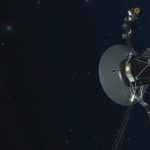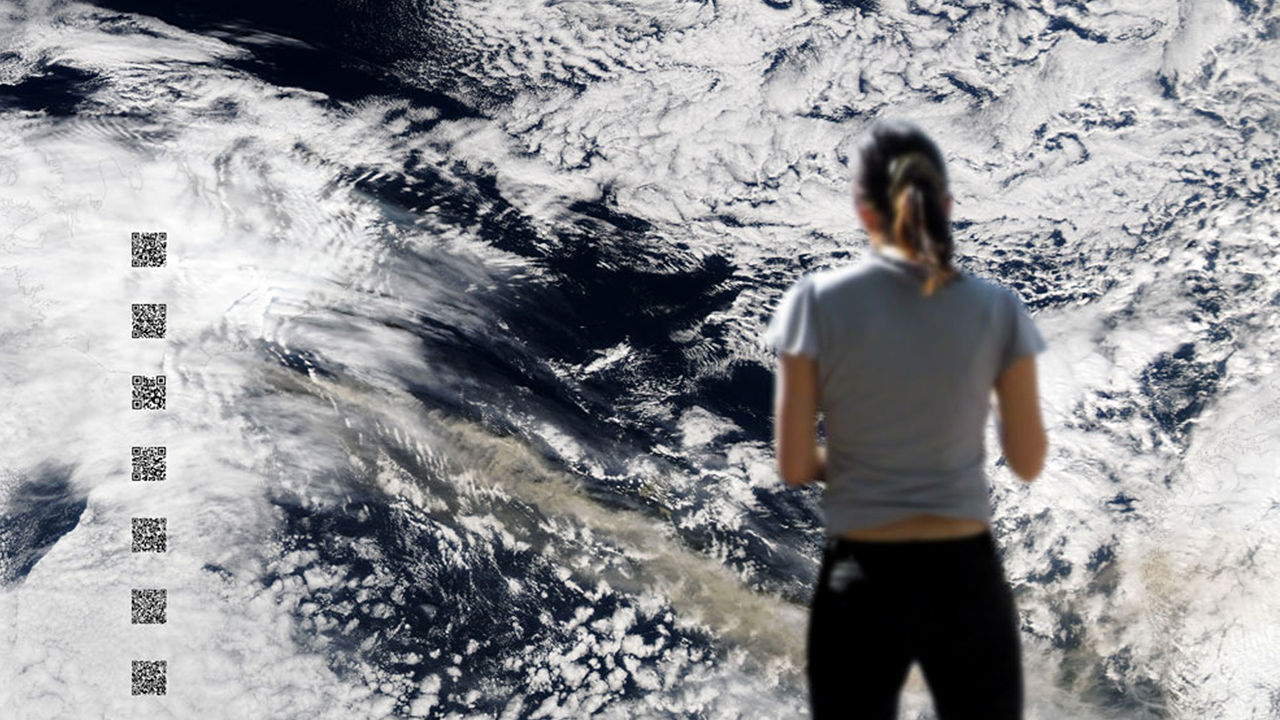How NASA’s “Mohawk guy” Will seek for lifestyles On Europa
Europa mission planner Bobak Ferdowsi on big name Trek, haircuts, and NASA’s search for life.
June 30, 2015
On August 6, 2012, NASA’s regulate room was once gripped by way of seven minutes of terror because the Curiosity Rover descended during the Martian atmosphere. in the midst of the entire excitement, one young staffer sporting a star-spangled mohawk caught the attention of viewers and fast changed into an web sensation. President Barack Obama even joked about getting a mohawk himself when he called to congratulate the group.
“Mohawk guy” was once Bobak Ferdowsi, a mission planner on Curiosity at NASA’s Jet Propulsion Lab. by the time Obama called, Ferdowsi had already sported quite a lot of hairdos at NASA, every one a logo of a milestone all through his nine years of working towards Mars. “The touchdown of Curiosity was one of the crucial significant moments of my lifestyles,” he tells fast firm. “i have never been so invested in one thing.”
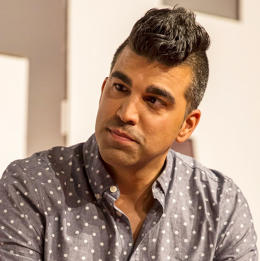
Now he is acquired a brand new haircut—he used to be rocking a extra low key mini-mohawk after I met him ultimate month—to check a brand new position: mission planner on NASA’s newest journey, an unmanned jaunt to Jupiter’s moon Europa to peer if its icy crust hides a saline ocean that might give a boost to life.
Ferdowsi’s personal mission to house started with star Trek. Ferdowsi’s mother is American, and his father is Iranian. “The Nineteen Eighties was a worrying time for those two international locations,” he says. “I couldn’t visit my family in Iran. They couldn’t come to discuss with us. famous person Trek represented this amazing idea that sooner or later, alien species that don’t get alongside will sign up for collectively. house exploration is a method for us to recognize that the Earth is in reality a small thing that we share, not a national thing, but a human thing.”
In his freshman yr, Ferdowsi studied experimental physics. When he used to be 18, his lab reproduced a scan that had prior gained a Nobel Prize. A charged ion, an atom that has lost most of its electrons, is placed within a magnetic container. When a laser is shone on the ion, it glows.
“the concept i will see the glow from this one factor that’s nearly improbably small, that was once an extraordinarily powerful moment,” says Ferdowi. but he soon realized something else in regards to the field. “principally, we were tearing apart experiments to be able to get better measurements. I couldn’t in point of fact get that eager about a decimal-location growth in a dimension.” shifting that decimal situation can take a decade.
“the idea that things took multiple years seemed loopy,” Ferdowsi says. “at the time, it felt like a large fraction of my life. i thought, maybe there is more quick gratification in engineering.” So he switched to learning aerospace engineering, and, sarcastically, he says, “I turn out in a occupation the place the whole lot takes a long time.”
house exploration is a long-time period industry. Jupiter’s moon has been an fascinating scientific destination for many years, and especially for the reason that 1979, when NASA’s Voyager 1 and 2 spacecraft captured pictures of Europa on their tour of the outer solar gadget. but Jupiter is greater than eight times as far from Earth as Mars is. just getting there takes between two-and-a-half to seven years. due to the cost and the gap, even if conditions for lifestyles are detected on Europa, it may be a long time sooner than a lander like Curiosity touches down on the skin. Astronauts might not work there safely with no very developed form of protecting, a type that doesn’t but exist.
The Europa Clipper mission, which officially moved from the find out about to construction stage on June 17, is the first step in exploring Europa. it is anticipated to launch round 2022, and after a couple of years’ trip to Jupiter, will fly through Europa multiple occasions to assemble information. the objective is to discover whether Europa might fortify existence—which, if it exists, may look very totally different to lifestyles on the earth.
Europa is the smallest of Jupiter’s moons at roughly 1 / 4 of the dimensions of Earth. it can be lined with a sheet of ice a couple of miles thick, but in 2013, the Hubble space Telescope detected water vapor over Europa’s south pole, the newest affirmation of the existence of a liquid ocean beneath its frozen crust. Its seafloor can have volcanoes or hydrothermal vents like its sister moon Io, providing a supply of vitality. Europa’s skinny environment, whose compounds are created by means of Jupiter’s excessive radiation, is oxygen-based totally. In different phrases, Europa might supply the entire stipulations essential to the advance of existence as we realize it.
which is assuming that extraterrestrial lifestyles is determined by the same stipulations that we do. “we now have learned that physics applies universally, that chemistry applies universally,” says Ferdowsi. “We don’t understand yet whether or not biology is universal. actually everything we keep in mind about existence comes from a single data level, which is Earth. i am not ok with that. i need more information.”
The Europa Clipper spacecraft will operate forty five flybys of the moon, every of so we can gather data on its surface and seas. NASA at the beginning studied sending a probe into orbit round Europa in a joint mission with the european space agency (ESA), however pulled out as a result of the projected value of $5 billion: The excessive radiation environment that surrounds Europa implies that an orbiting spacecraft would require pricey protective. as a substitute, it’ll make safer, highly elliptical orbits around Jupiter to carry out its flybys of Europa. Its energy prices are reasonably low cost too: Clipper will likely be powered by sun panels as an alternative of costlier and complex nuclear power.

The mission, estimated to price around $2 billion, is still in its early days. “At this stage, we’re not solving the most complex problems,” says Ferdowsi. “we are coping with the basics. each of these flybys will have an idea of, What are we going to look at? What does that imply for the way we appoint the spacecraft? What does it imply for how so much knowledge we accumulate? we will begin portray an image—still broad strokes at this stage—of what a day in the life of this spacecraft is in point of fact going to be.”
The Europa Clipper’s payload of scientific units, introduced on may 26, is designed to work in conjunction to determine Europa’s doable to maintain existence, slightly than to observe lifestyles straight away. that means measuring the depth and salinity of Europa’s ocean, the thickness of the ice shell, and the chemistry of its floor.
The Clipper’s cameras will produce excessive-decision images of Europa’s floor and help resolve its composition, while a mass spectrometer will analyze its environment. An ice-penetrating radar will decide the thickness of the moon’s icy shell and search for subsurface lakes, while a magnetometer will use the energy and path of the moon’s magnetic box to estimate the depth and salinity of its ocean. And a thermal instrument will scour Europa’s floor in search of plumes of hotter water. “despite the fact that if there are whales under the ice, that might be my favourite thing,” laughs Ferdowsi.
The operation of an orbital mission like Europa is reasonably completely different from a landing mission like Curiosity, whereby the data acquired from the rover each day determined plans for day after today. “within the early days of Curiosity, we lived on Mars time,” says Ferdowsi. “the great thing about orbital stuff is that it is on a regular basis extra activities.”
that does not make the mission or his job easy: as mission planner, Ferdowsi is charged with optimizing the myriad exchange-offs fascinated with any trip into space. “It’s a fascinating job, as a result of it involves synthesizing information across huge chunks of the design, and that includes both spacecraft design and the whole floor machine and the way we function.” because of this, Ferdowsi works closely with each the flight system group that designs the spacecraft, and the operations team, which manages the spacecraft’s activities on a daily and hourly foundation.
just lately, as an instance, the workforce looked at a exchange of engines. Do you put one large engine or quite a lot of smaller engines on board? A single massive engine is also a single level of failure, but having a couple of small engines complicates the operation of the spacecraft. “It’s figuring out picks that have been made within the flight device that affect operations and, conversely, how will we design a spacecraft that’s straightforward to function?”
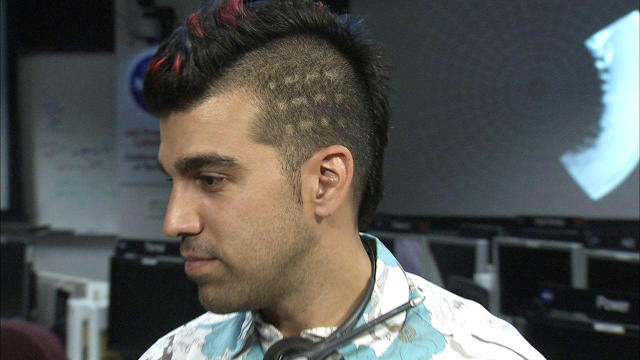
His work adjustments over the long lifetime of a mission. First there’s planning, then constructing, and at last checking out the bodily spacecraft, its tool, and the entire operations methods, like running via launch scenarios or landing eventualities. The launch itself is followed with the aid of several years of trip via house.
I ask Ferdowsi how he offers with working on a single venture for such a long length, given his youthful aversion to long timelines. “it is definitely not 10 years, and you get one second,” he says. “The haircut thing”—he sports a brand new look for each major mission milestone—”started as a result of that reputation that there are steps along the way, whether or not it was the first time that we bought to test a state of affairs on the flight automobile that used to be sooner or later going to go to Mars, or the first time that we did a rehearsal collectively of what the launch would seem like. All of those issues are beautiful pleasurable.”
Ferdowsi relishes each step along the right way to Europa. “i do not think i will ever become bored with this job. day by day, even while you fail, you get to examine one thing new,” he says. “I simply wish to feel, on the end of my lifestyles, that i’ve contributed one thing valuable to these missions.”
fast company , read Full Story
$(function()
var $type = $(‘#fc20-publication form’);
$type.on(‘put up’,function(e)
e.preventDefault();
var self = this;
var motion = $type.attr(‘action’);
var manner = $form.attr(‘manner’);
var data = $type.serialize();
// Disable enter unless we know extra in regards to the response
$kind.in finding(‘enter’).prop(‘disabled’, proper);
$.ajax(
url: motion,
type: way,
knowledge: knowledge,
context: $type
).done(perform (data)
window.ga(‘send’, ‘event’, ‘consumer’ , ‘interaction’ , ‘FC20:ArticleView:e-newsletter:success’);
window.ga(‘rollup.send’, ‘event’, ‘user’ , ‘interaction’ , ‘FC20:ArticleView:e-newsletter:success’);
_formSuccess($kind, knowledge);
// vent.set off(‘public:set-pref’,’public:management:publication’, 1);
).fail(function (error)
window.ga(‘ship’, ‘event’, ‘user’ , ‘interplay’ , ‘FC20:ArticleView:newsletter:fail’);
window.ga(‘rollup.send’, ‘event’, ‘consumer’ , ‘interaction’ , ‘FC20:ArticleView:newsletter:fail’);
_formFail($kind, error);
// vent.set off(‘public:set-pref’,’public:mcp2014:newsletter’, zero);
);
function _formSuccess ($kind, data)
if (!$type) return;
// put off kind and show success message
$type.guardian(‘div’).html(‘
‘);
$type.parent(‘div’).removeClass(‘error’);
;
perform _formFail ($form, error)
if (!$form)
return;
// Use message from server response
var message = JSON.parse(error.responseText);
if (message.response && message.response.message)
message = message.response.message;
// Error message no longer provided
else
message = ‘Please enter a valid e mail handle.’;
var $father or mother = $form.guardian(‘div’);
// do away with other error first
var $errors = $father or mother.find(‘.alert-box’);
if ($mistakes)
$blunders.fadeOut(300, function()
$(this).get rid of();
);
if (message && (message.code === -one hundred(message.code === 220))
message = ‘Please enter a legitimate e-mail address.’;
// Append new mistakes
$form.dad or mum(‘div’).prepend(‘
‘);
$form.find(‘enter’).prop(‘disabled’, false);
;
);
)
#fc20-publication
max-width: 100%;
history: #c8d5dc;
#fc20-e-newsletter .block
margin: zero zero 24px 0;
padding-left: 10px;
padding-high: 16px;
padding-backside: 16px;
#fc20-e-newsletter p
position: relative;
colour: #000000;
font-size: 14px;
font-fashion: commonplace;
padding-proper: 24px;
#fc20-publication input
font-measurement: 18px;
border:zero;
#fc20-e-newsletter button
padding: zero 12px;
line-height: 32px;
border: 0 none;
font-weight: 300;
textual content-turn into: uppercase;
history-colour: #e40079;
field-shadow: none;
border-radius: 0;
font-size: 14px;
#fc20-newsletter button:hover
background: #000000;
#macro-fc20-newsletter-signup #fc20-e-newsletter
show: block;
max-width: a hundred% !important;
#macro-fc20-publication-signup #fc20-newsletter p
place: relative;
shade: #000;
font-measurement: 18px;
font-model: standard;
padding-left: 21px;
font-family: FCZizouSans;
margin-bottom: 12px;
#macro-fc20-e-newsletter-signup .alert-field
width: 80%;
#macro-fc20-publication-signup .display
padding-left: 5px;
(89)

